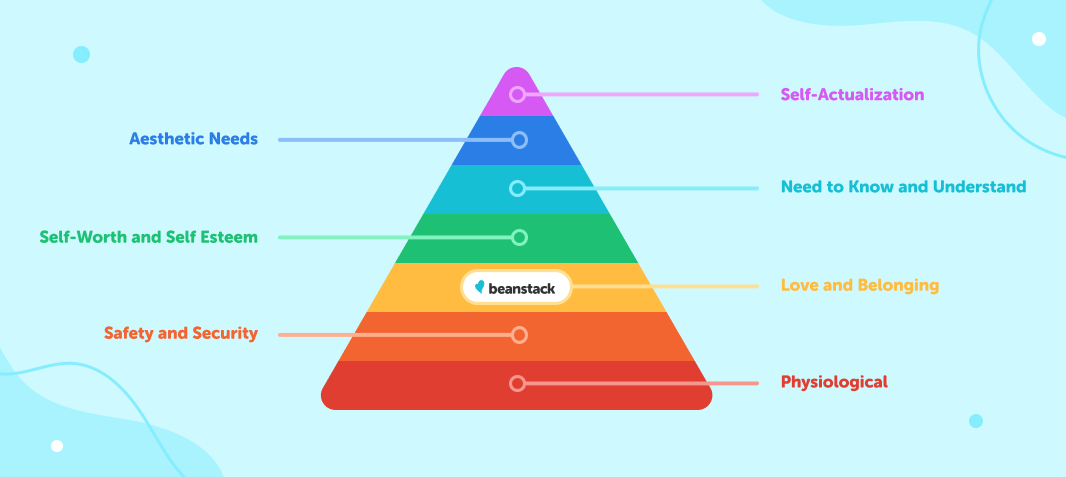Successful principals implement four essential practices: prioritizing instructional focus in their interactions with teachers, cultivating a positive school climate, encouraging collaboration and professional development among educators and other staff members, and witnessing the academic growth and achievement of their students. One highly effective strategy to foster student success is by building a positive reading culture within your school community. Not only does this promote strong relationships and mutual respect, but it also catalyzes academic excellence. Now, let’s explore further how you, as a principal, can establish and support a thriving reading culture within your school.
What Is School Reading Culture?
A school reading culture is a learning environment where reading is highly valued and encouraged, not just by the educational staff, but also by students and even parents. Principals play a tremendous role in developing and promoting this culture.
Extensive research confirms the advantages of fostering a reading culture that is supported by healthy independent reading habits. Unfortunately, many schools face the challenge of unevenly distributing these benefits due to the decline in students’ reading habits compared to the past. Only those who actively choose to engage in independent reading reap the rewards, leaving others at a disadvantage. Fortunately, Beanstack offers a solution that levels the playing field by providing equal opportunities for all students, whether they struggle with reading or excel at it. The incorporation of reading culture, with the aid of tools like Beanstack, directly influences reading outcomes, which is why it should be a top priority for school leadership.
Why Developing a Reading Culture at Your School Is Important
Developing a school reading culture benefits your students by boosting their literacy and reading capabilities as well as promoting academic success in other areas. For instance, in one Texas school, the implementation of a reading program utilizing Beanstack resulted in a 60% increase in standardized test scores. This case serves as just one example of many instances that highlight the academic benefits of cultivating a school reading culture.
School reading culture has social benefits as well, as it helps to build a strong sense of community. Students and staff come together around a common goal and a positive atmosphere of excitement and enthusiasm that benefits everyone involved.
How School Culture Impacts Reading Culture
School culture includes the relationships that are developed within your school, and it has a direct impact on your reading culture. The guiding beliefs and values that drive all the students and people who work at your school are shown in the way your school operates. Building a positive school culture may help catalyze a positive reading culture, and this is one area where principals play a pivotal role.
There are five steps required to build a positive culture within a school setting:
Step 1: Building Relationships
Establishing a positive and nurturing school environment hinges on fostering strong relationships among all stakeholders. Principals play a pivotal role in cultivating these connections with teachers, staff, students, and the wider community. The relationship between principals and teachers is particularly vital as it sets the tone for the overall school culture, influencing the way teachers and students interact, communicate, and collaborate.
Step 2: Modeling Positive Behavior
Leadership sets the tone for positive reading habits. When the principal demonstrates their commitment to reading, it creates a ripple effect throughout the school. The act of logging in and using the platform serves as an inspiration for teachers to do the same, and when teachers embrace the platform, students follow suit. The culture of reading starts at the top and permeates throughout the entire school community. Check out this video of an engaged principal doing his part to create a positive reading culture.
Step 3: Setting Goals to Evaluate School Expectations
By incorporating reading challenges through Beanstack, school principals have the opportunity to establish school-wide reading goals. The outcomes of these challenges are astonishing, with a 46.27% increase in participation and a 104.51% increase in reading minutes compared to those without goals. Goal setting also leads to reading streaks, with a 78.95% rise in readers maintaining a streak and 71.61% of them maintaining it for seven days or longer. This data highlights the positive influence of goal setting within a school community and its crucial role in nurturing consistent reading habits.
Step 4: Achieving a School Vision
Setting a reading challenge not only establishes a shared vision for the school but also creates a collaborative learning environment where students and teachers can work together toward a common goal. By rallying everyone around the goal, it creates a positive and supportive learning environment.
Step 5: Appreciating Success
Additionally, Beanstack creates a natural way to celebrate success. Not only do students earn badges within the platform, but the principal can also use the platform to encourage the school to work toward a larger school-wide reward.

The Role of Maslow’s Hierarchy of Needs in Education
Maslow’s Hierarchy of Needs in Education provides a comprehensive framework for understanding the essential elements students require to thrive in their learning environment. It begins with fulfilling their basic physiological needs, such as access to nutritious food, safe shelter, and adequate clothing. Once these fundamental needs are met through the provision of well-equipped facilities, nutritious meals, and a secure environment, students can then focus on fulfilling their higher-level needs:
- Love and belonging: Creating a nurturing and inclusive school community where students feel valued, supported, and connected with their peers and teachers.
- Esteem: Fostering a sense of self-worth, confidence, and recognition for students’ achievements and contributions.
- Self-actualization: Empowering students to reach their full potential by providing opportunities for personal growth, exploration, and self-discovery.
By prioritizing these elements of Maslow’s Hierarchy of Needs in Education, schools can foster an environment that facilitates learning while also nurturing students’ overall growth and well-being. These three aspects provide an opportunity for principals to incorporate reading challenges into the learning environment, creating a sense of belonging as everyone works together toward a common goal. Students receive recognition for their efforts which boosts their self-esteem, and this success further motivates them to read more and strive for greater achievements, ultimately leading to their self-actualization.
How Principals Make an Impact on Reading Achievement
Reading achievement isn’t solely the responsibility of the classroom teacher; the role of the principal is equally important. Principals have a unique position that allows them to reach not only teachers and students but also the parents and community. As the face of the school, they can use programs that encourage community involvement, leading to positive literacy outcomes within the school.
Furthermore, principals have a direct impact on the success of reading achievement. By setting the right stage, they can contribute to tremendous academic accomplishments. Conversely, if principals do not support reading achievement, it can hinder progress.
In addition, principals are in a prime position to support teachers. They can provide instruction, evaluate teachers’ commitment to reading achievement, and hire educators who possess the right mindset. Moreover, principals can create an environment that fosters the retention of the best teachers.
This comprehensive approach, where principals actively participate in promoting reading culture, ensures a strong foundation for academic success and enhances the overall educational experience within the school community.
Tips for Building a Reading Culture
As principals look for ways to build a positive reading culture, these tips may help:
Model Positive Reading Habits
Students need to witness the principal engaging in reading, listen to the principal sharing their favorite books, and have access to reading lists or reviews curated by the principal. By demonstrating a love for reading, it can inspire more students to develop a passion for reading as well.
Read Aloud to Students
Principal read-alouds hold immense power in shaping students' reading experiences. They not only ignite curiosity in different genres of literature but also send a powerful message to students that reading is highly valued by the school's leadership.
Ask Teachers and Staff What They Are Reading
Reading culture isn't limited to students alone. It's important for teachers and staff to also foster their reading habits. Principals can show genuine interest by casually asking about their reading preferences or even conducting formal interviews to explore the books they enjoy if they are appropriate for the student's age group.
Display Books in Your Office
When students step into the principal's office, they should be surrounded by a diverse selection of books. Alongside educational titles, there should be a prominent display of books that the principal reads for pure enjoyment.
Get Involved in Reading Competitions
Don’t just set up reading competitions. Get involved. This goes beyond logging your books or minutes to read. You could do things like offer to let the top reader be "principal for a day" or have a pizza party with a group of readers in your office. Additional fun (but messy!) suggestions could be to offer to get a pie in the face or dye your hair if the school meets the challenge goal. You can also create a promotional video, including your favorite book recommendations, to get students excited.
Use Data From Beanstack
Beanstack offers a wealth of data that can be shared with staff and students. Showcase your progress and contribute to the development of a positive reading culture by regularly and publicly highlighting goals achieved, minutes read, and books completed.
Explore additional strategies to build a strong school reading culture.

How Beanstack Supports Principals and Administration
As a principal, you hold the key to developing a thriving reading culture. Beanstack’s inclusive approach helps drive successful outcomes for every student, and principals can play a strong role. Through the platform, you can get a pulse on how students are performing in their reading achievement. You can also build a positive reading culture in your school using the platform’s built-in rewards and structure.
For example, you can set up a Principal’s Picks Reading Challenge. Utilize the premade templates in Beanstack and quickly compile a reading list of suggested titles. Students can earn badges for reading those books and earn rewards once the individual, class, or school achieves their goal. For instance, in the example we provided earlier, the whole school can see the principal get a pie in the face, but the top-achieving student can do the pie throwing. Check out this article from Education World to see more examples of how school principals used different reading motivation techniques to create excitement about reading.
Beanstack not only allows principals to easily track student progress and provide support to staff, but it also promotes an inclusive reading culture that benefits every student in the school. By using Beanstack's equitable approach to reading motivation, principals can ensure successful outcomes for all students while fostering a sense of community among teachers, staff, and the broader school community. Research has shown the numerous benefits of a healthy reading culture and independent reading habits, and Beanstack can help principals achieve these benefits. With its comprehensive school and district-wide platform, Beanstack strengthens relationships with school staff, students, parents, and the greater community. This valuable resource allows individuals to collaborate and support students on their journey toward academic success.
Strengthen Relationships With Teachers and Staff
Beanstack offers a comprehensive platform that is accessible by providing a school-wide or district-wide platform that’s consistent for all teachers and staff within a school or district. It fosters positive communication, while also allowing for positive communication within the platform, sharing reading lists, and celebrating successes and achievements. Principals can tap into the platform to build a reading culture with their teachers and staff, further enhancing the overall learning environment.
Build Relationships With Community
Parents have the convenience of logging into Beanstack to engage in reading activities with their children beyond school hours. Moreover, Beanstack serves as a valuable resource, connecting parents to library systems where they can find additional reading materials and effortlessly see the log with their children’s reading minutes. Parents can log into Beanstack to work with their children outside of school. It can also connect parents to resources in the library system to assist them in finding reading material and logging reading minutes. Additionally, Beanstack can show the community how principals are making an impact, improving visibility and public perception.
Nurture Relationships With Students
Beanstack allows principals to build positive relationships with students in multiple ways, including:
- Increasing motivation: Positive interactions on the platform increase motivation, encouraging students to spend more time reading.
- Providing safe spaces: Beanstack’s emphasis on positive reinforcement creates a nurturing environment for psychologically safe reading and learning.
- Promoting a love of reading that avoids punitive methods: Beanstack supports reading integrity and instructional goals without quizzes or restrictions while focusing on reading time to develop active reading skills, vocabulary depth, and phonemic and phonological awareness.
Schedule a Demo Today
The benefits of Beanstack for principals, students, teachers, staff, and parents are quite extensive. See how the platform works for you and reach out to schedule a demo today.

